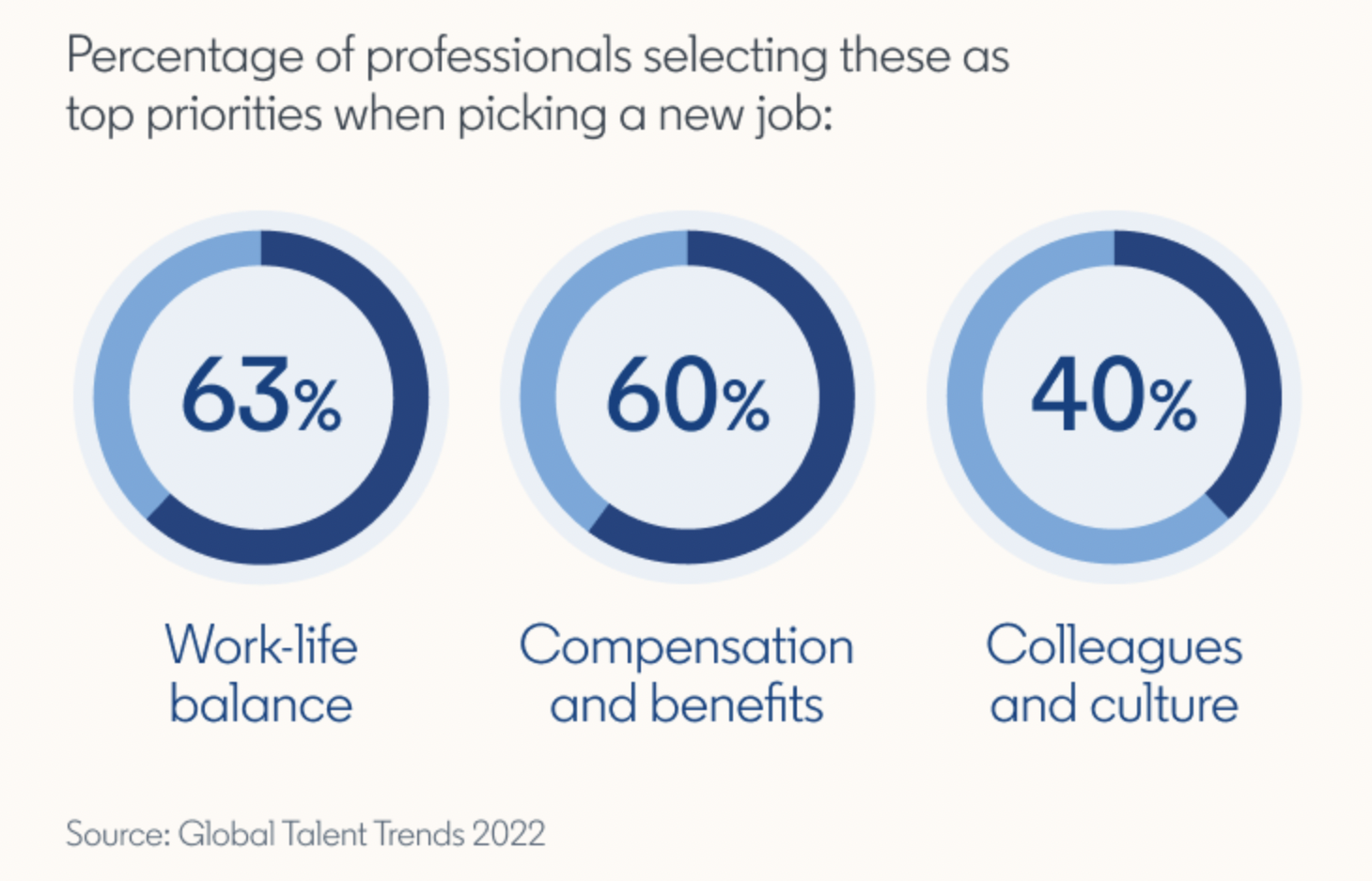Written by Technically Media CEO Chris Wink, Technical.ly’s Culture Builder newsletter features tips on growing powerful teams and dynamic workplaces. Below is the latest edition we published. Sign up to get the next one.
Like most business strategies, employee engagement has two levels: doing the work and talking about the work. Or, as one CEO grumbled to me about another CEO: Some are world class at doing the talking, even if their offerings are commensurate, if competitive, with others.
Call it the LinkedIn Arms Race. Each company announces a new perk, initiative or other employee engagement strategy, and then a swarm of nervous managers rush to implement the same ideas. For CEOs, HR pros and other recruiters-in-chief, your LinkedIn feed has become a minefield.
That’s because a pandemic-sized rethink of work priorities has thrust just about every company into what we’ve all nervously called The Great Resignation for much of the last year. High quit rates persisted through the end of 2021; as many as a third of all American workers left their jobs last year.
Inside the breathless reporting, though, is the important point that not all industries and companies are experiencing the rates of turnover. Clearer still: Most professionals who have left aren’t leaving for more money. They’re prioritizing flexibility, culture and mission, too. Given the choice between the two, more professionals are choosing work-life balance over higher compensation, according to LinkedIn Research.

To transition The Great Resignation into The Great Retainment, employers need a full reevaluation of employee engagement. So says Dave Carhart, the VP of people at Lattice, an HR management tool turned tech unicorn. I first spoke to Carhart late last year following the release of his company’s State of People Strategy report. Around half of surveyed professionals reported they were actively looking for other opportunities. Nearly 1 in 5 said they were looking to move immediately.
“We’re still at the beginning of an ongoing wave,” Carhart told me. “The pressure in the market is universal.”
His point? Many workplace dynamics changed by the pandemic won’t revert back. The social contract between employers and employees is being renegotiated. That’s why The Great Resignation matters to all employers, even though the largest portion of losses are taking place in lower-wage hospitality and service sector jobs. Here are a few lessons:
Scrutinize the first 90 days like never before
Exceptions aside, the 90-day evaluation period for new hires was once a tool primarily for an employer to evaluate an employee. Now employees are shopping more than ever. New hire attrition has surged, says Carhart.
“In the past, folks might have been more inclined to stick it out — do a year or 18 months,” Carhart said. “Now at two or three or four months in, people are willing to leave for something better or decide this isn’t what they signed up for.”
That has implications for both recruiting and retention.
“Just because someone posted on LinkedIn about their role, people are not going to stick around in this market if it isn’t the right fit,” Carthart said.
So, you must evaluate your onboarding process. In a new hire’s first few months, reinforce your mission, vision and values. Prioritize “belonging” — encourage new employees to spend extra time meeting other teammates early on in their tenure.
Reassess compensation more regularly
Pandemic inflation may have already peaked but employees are now far more confident in ensuring they’re paid fairly. As Carhart reminds, this doesn’t necessarily mean you have to be in perpetual salary negotiations. Regularly assessing salary ranges is different from making salary changes — which could establish bad habits and unhealthy competitiveness. It’s also important to understand that few employees make their choices based entirely on salary alone.
“If you are underpaying people compared to the market, you will lose people,” Carthart said. “It will not be why someone gets up in the morning for the long term; you need a mission, too. You need a granular and more real-time assessment of the market right now, so you can be ahead of it.”
A good rule of thumb: Whatever the market is paying a role on your team, pay your high-performers above it. Early Google people operations leader Lazslo Bock has argued for “unfair pay” by compensating staff in the same positions by performance, not level.
Assess fringe benefits
Benchmark your full benefit offerings, especially shortcomings that have been cited in past employee exit interviews. No need to chase every benefit or perk. Survey your staff and consult teammates directly about just what investments they might value best. Some teams might prefer an increased budget for professional development, others might prefer home office investments.
“Only one company is the best-paying company. That’s just math,” Carhart said. “You’re creating a package that runs across compensation, flexibility, culture, mission and team.”
Demonstrate growth opportunities
Great managers really care about their direct reports. They keep their reports connected to organizational mission and articulate how their work fits into top-level strategy, and they demonstrate how high performers can grow in the organization. That’s especially important now, as 47% of those surveyed said they feel their careers have stalled since early 2020.
Amplify your employer brand with strategy
Why is your company a great place to work? What is special? Why is it different from any other place?
Define your company’s employee value proposition (EVP) and then amplify that employer brand. Do it with purpose. Technical.ly’s client services team specializes in this work, and we’ve found many companies fall into producing “random acts of employer brand.”
That’s when the occasional Instagram staff photo, Linkedin announcement of a new perk and a company careers page rebrand counts as an employer brand strategy. In contrast, survey staff, establish a written EVP and then highlight employee stories that reinforce that employer brand.
###
It has been a tumultuous last few years. Carhart notes that itself can be an opportunity for employers to strengthen their bonds with employees.
“If I’ve learned anything in the last 18 months, it is how important it is to be able to be wrong,” Carhart said. Employees want to see that their input is listened to and can make a difference.
Across research, one point stands out. Professionals want to be able get work done when it’s most convenient so they can fit work into their lives. Core work hours for meetings and collaboration time are still quite reasonable, but limit other constraints. Work-life balance isn’t enough anymore; it’s life-work balance.
What of that CEO who has felt outshined by a competitor in the LinkedIn Arms Race, even while he feels his company’s offering is similar? He’s thinking about a four-day workweek trial.
Sign up for the Culture Builder newsletter






